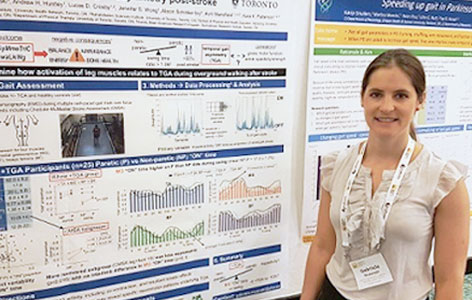
Conference: International Society of Posture & Gait Research, June 25-29, 2017, Fort Lauderdale, Florida, USA.
Conference Highlight: Balance control is fundamental to human behaviour. Sensory, motor and cognitive components are studied through basic or applied science from neurophysiology to biomechanics of functional mobility.
Conference Article: Two related symposia were of particular interest: implementing mobility research into policy and practice; and using smart technology to prevent age-related decline in balance, strength, physical activity and behavioural complexity. Both initiatives were discussed from international perspectives and highlighted the importance of underlying theory, models and/or frameworks.
In North America and Australia, the Knowledge-to-Action cycle is used to identify barriers to or facilitators of implementation as well as to guide development of the interventions for reactive balance and fall prevention. Feasible assessment tools and synthesized evidence-based guidelines were recommended for successful clinical translation of research findings. Individual psychosocial drivers of uptake/adherence and organizational challenges such as lack of funding/awareness or changing priorities are important factors to consider when designing strategies.
The delivery of health care services via mobile communication devices, known as mHealth, has recently expanded with improved technology. A focus on behaviour change is increasingly recognized as a crucial component in the efficacy of this approach. The European Project “PreventIT” has developed an electronic version of the adapted Lifestyle-intergrated Functional Exericse programme (eLiFE) that incorporates social cognitive and habit formation theory. Goal-setting, personalized advice, motivational messages and real-time feedback are features of this intervention, which includes strength and balance/agility tasks to increase physical activity in middle-aged adults. Advanced sensors in smartphones and watches have created the potential to continuously monitor, in a relatively inexpensive and unobtrusive way, health status information. Self-assessment and virtual coaching functions may empower people to improve their lifestyle and reduce risks.

